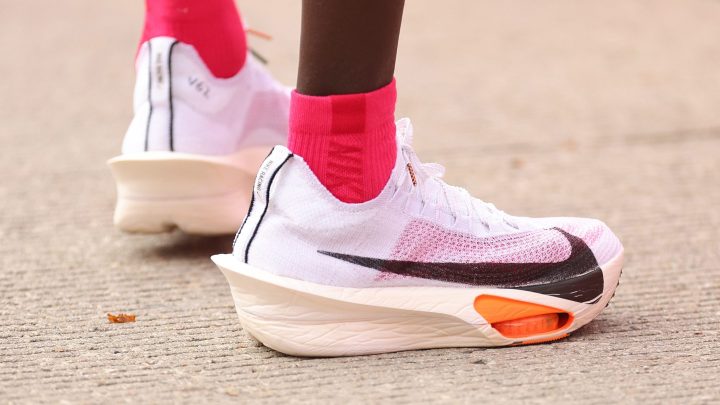
“Super shoes” take their place in the $50B running shoe market
“Super shoes” take their place in the $50B running shoe market

This story was produced by our colleagues at the BBC.
Last year, marathon world records were coming in thick and fast. Kenyan Kelvin Kiptum shaved 34 seconds off the Chicago Marathon record time, while Ethiopia’s Tigist Assefa shattered the women’s marathon world record in Berlin, knocking more than two minutes off the previous best.
Their names made headlines, but as much attention was paid to the shoes they were wearing — a new breed of high-tech sneaker that’s become known as the “super shoe.”
The sole is made of a thick foam fitted with a carbon fiber plate, which is supposed to act as a catapult and give an extra boost to every step.
They are helping athletes run faster and making more money for running shoe companies in what is a $50 billion market, according to one estimate. All the major brands have at least one version of the super shoe.
“There’s a lot of chat about carbon plates,” said Alex Griffin from On, a Swiss company that has sold over 10 million pairs of shoes worldwide. “We have a few shoes which have it in there. But equally, it’s sometimes not the be-all and end-all of the innovation.
“I think there are other ways of creating performance in product,” he went on. “So some of our technology actually is hindered by a carbon plate. Sometimes, it’s like the secret recipe is not always involving a carbon plate, but sometimes it obviously is. I think going forward, that’s just something where we’re keen to see if that’s the winning ingredient, or are there other ingredients which also help to make that super shoe, which also takes you back to innovation — that’s the dance.”
Super shoes are a premium product; most of them start at a minimum of $250, so they’re not for every budget in what’s traditionally been viewed as a cheaper sport to participate in.
Some people, including athletes, think super shoes are making racing too easy. And governing bodies have been keeping an eye on them too. World Athletics updated its regulations around super shoes in January 2022.
Professional runner Kellyn Taylor was the first-placed American woman (she came in eighth overall) at last year’s New York Marathon. And, of course, she was wearing super shoes.
“They’ve completely rewritten everything,” she said. “If I had a choice, I think I probably would have been like, ‘Let’s slow the roll a little bit, you know, and just kind of keep it honest and not have it be a race against who has the better technology.’
“People were losing races because they didn’t have the technology. It wasn’t because they weren’t a better runner; it was because they didn’t have the technology,” she said. “For me, I don’t like seeing that. I think running is so pure, it should be about who is the best — not necessarily who has the better tech.”
It seems like the most intense rivalry in running right now isn’t between the world’s best runners, but what they’re wearing on their feet.
There’s a lot happening in the world. Through it all, Marketplace is here for you.
You rely on Marketplace to break down the world’s events and tell you how it affects you in a fact-based, approachable way. We rely on your financial support to keep making that possible.
Your donation today powers the independent journalism that you rely on. For just $5/month, you can help sustain Marketplace so we can keep reporting on the things that matter to you.

















